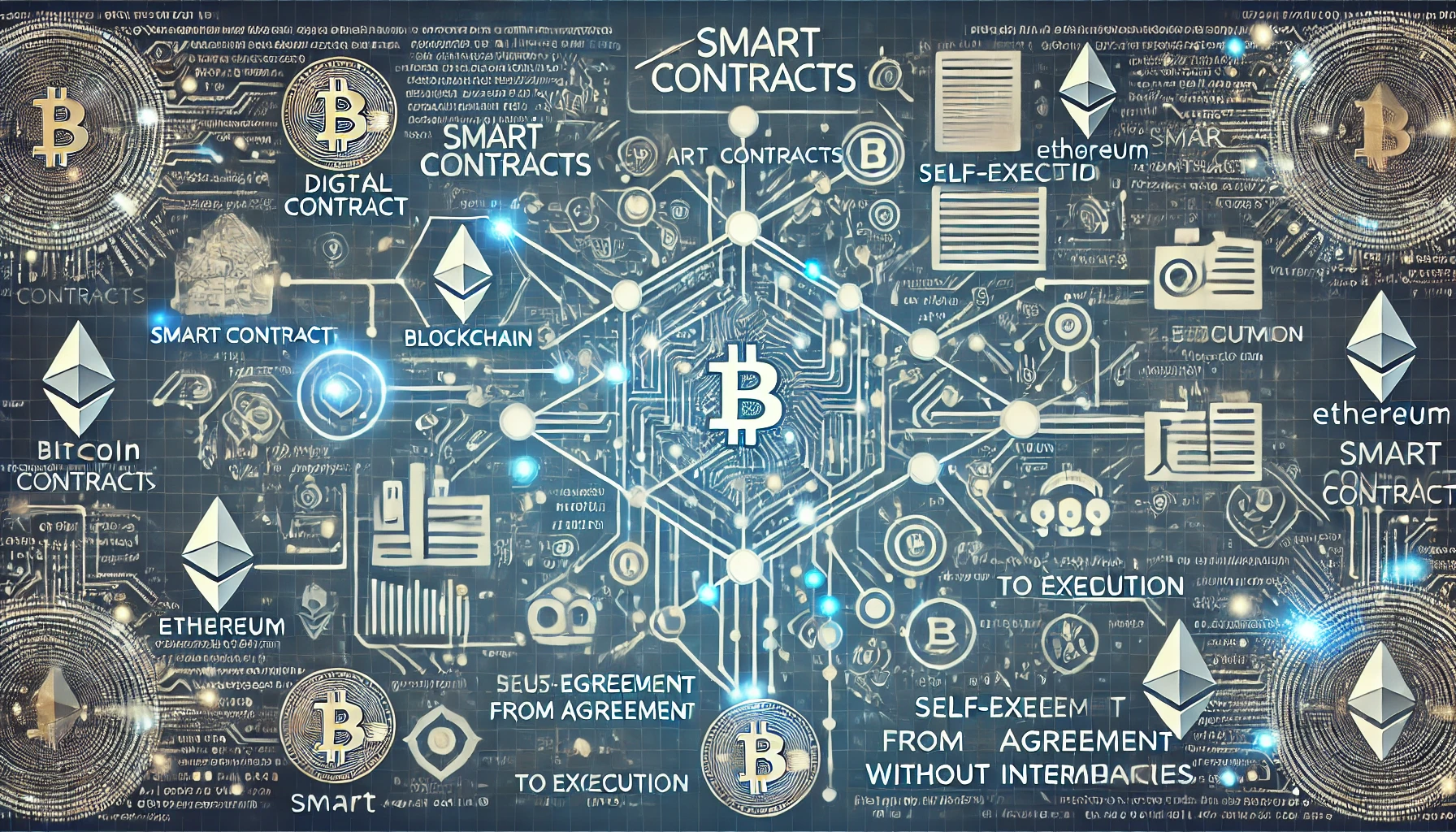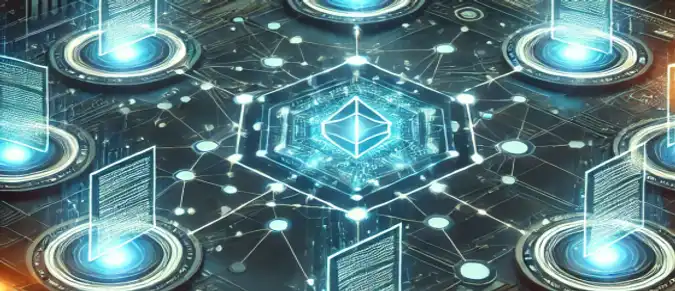Modern technologies bring many innovations into our lives, and one of these technologies is smart contracts. They have become an integral part of decentralized applications (dApps) and play a key role in their functioning. In this article, you will learn what smart contracts are, how they work, and why they are the foundation of dApps.
- What are smart contracts?
- How do smart contracts work?
- Advantages of using smart contracts in dApps
- Examples of using smart contracts in dApps
- Security and risks of smart contracts
- The future of smart contracts and dApps

What are smart contracts?
Smart contracts are digital agreements that automatically execute when certain conditions are met. They operate within a blockchain network, ensuring transparency, immutability, and reliability. Unlike traditional contracts, smart contracts do not require third-party involvement, as all conditions recorded in them are automatically verified and executed by the blockchain.
This technology allows for the creation of multi-step agreements, such as financial transactions, asset management, or inheritance distribution. Smart contracts are becoming the foundation for decentralized finance (DeFi), where they automate loans, collateral, and other operations traditionally performed by banks.
How do smart contracts work?
Smart contracts operate based on blockchain technology, which is a decentralized database that ensures the storage and transfer of information between network participants. The main principle of smart contracts is the automatic execution of pre-programmed conditions without the need for trust in a third party.
Let's consider an example of how a smart contract works on the Ethereum platform:
| Stage | Description |
|---|---|
| Creating a Smart Contract | A programmer writes a smart contract that defines the conditions for transferring funds between parties. For example, the contract may provide for the transfer of funds upon confirmation of delivery of goods by the buyer. |
| Deployment on the Blockchain | The smart contract is published on the Ethereum blockchain, becoming available to all network participants. No one can change or delete it. |
| Condition Fulfillment | The buyer orders a product, and the smart contract monitors the fulfillment of the conditions. Upon confirmation of delivery by the buyer, the contract automatically transfers the funds to the seller. |
| Automatic Execution | Once all conditions are met, the smart contract executes, and the funds are transferred to the seller's account. All transactions are recorded on the blockchain, ensuring transparency and immutability. |
Thus, smart contracts provide automation, transparency, and security in transactions, making them a key element for the operation of decentralized applications (dApps).
Advantages of using smart contracts in dApps
Smart contracts in modern dApps have become an indispensable tool for efficient and secure management of digital processes. Thanks to their unique capabilities, dApps overcome the limitations of traditional systems, offering users new levels of automation, transparency, and reliability.
- Automation
Smart contracts automatically execute the conditions embedded in them without the need for human intervention. This eliminates the possibility of errors and fraud, speeding up the execution of operations.
- Transparency and Trust
All transactions conducted through smart contracts are recorded on the blockchain, making them transparent and accessible for verification by all network participants. This increases trust between parties, as the contract conditions are immutable and visible to everyone.
- Cost Reduction
Smart contracts eliminate the need for intermediaries, such as banks and notaries, reducing the costs of operations and speeding up their execution.
- Security
Thanks to the decentralization of the blockchain, smart contracts have a high level of security. They cannot be changed or deleted after deployment, protecting them from hacks and external interference.
- Flexibility
Smart contracts can be configured to perform a wide variety of tasks, making them useful in various industries, from finance to asset management.

Examples of using smart contracts in dApps
Smart contracts are used in various fields, supporting the operation of decentralized applications (dApps) and ensuring the automation, transparency, and security of processes.
Decentralized Finance (DeFi)
Smart contracts are the backbone of DeFi platforms such as Uniswap and Aave. Uniswap allows users to exchange cryptocurrencies without intermediaries, automatically setting prices and executing trades through smart contracts. Aave uses smart contracts to automatically provide and receive loans, eliminating the need for banks and reducing costs.
Gaming Industry
In games like Axie Infinity and Decentraland, smart contracts manage digital assets, trading, and gaming processes. In Axie Infinity, players can own and trade virtual creatures, while Decentraland allows users to buy and sell digital real estate, with all transactions recorded on the blockchain.
Asset Management and DAOs
MakerDAO and Aragon use smart contracts to manage decentralized autonomous organizations (DAOs). In MakerDAO, smart contracts manage the DAI stablecoin and make decisions based on participant voting. Aragon allows the creation and management of DAOs, automating processes and ensuring transparent governance.
Logistics and Supply Chains
Smart contracts simplify supply chain management, as seen with IBM Food Trust and VeChain. These platforms use blockchain to track goods and fulfill delivery conditions, increasing trust and reducing fraud risks.
Healthcare
In healthcare, smart contracts help manage patient data and automate insurance processes. Platforms like MediBloc and Patientory use smart contracts to protect medical data and ensure confidentiality, improving interaction between patients, doctors, and insurers.
Thus, smart contracts are widely used in various industries, ensuring the efficient execution of operations and opening up new opportunities for dApps development.
Security and risks of smart contracts
Despite their significant advantages, smart contracts are subject to certain risks and vulnerabilities that must be considered for successful use in decentralized applications.
One of the main risks of smart contracts is coding errors. Even small mistakes can lead to serious consequences, such as loss of funds or incorrect execution of conditions. An example is the incident with The DAO in 2016, where a coding error led to the theft of significant funds.
Hackers can exploit vulnerabilities such as the "reentrancy attack" and "front-running" to abuse smart contracts. For example, a "reentrancy attack" allows repeatedly calling the same function of the contract before its completion, which can lead to multiple withdrawals of funds.
The legal status of smart contracts remains unclear in many countries, creating uncertainty in issues of liability and contract enforcement within the legal framework.
Smart contracts can lead to unforeseen outcomes if the conditions were not carefully thought out. For example, funds may be permanently locked if external circumstances change and the conditions cannot be met.
Methods of minimizing risks
To reduce risks, it is recommended to:
- Conduct code audits to identify errors and vulnerabilities.
- Use multi-step condition checks before executing key functions.
- Use proven libraries and standards.
- Limit funds in the early stages of the smart contract's operation.
- Provide insurance and compensation funds to protect users.
Smart contracts represent a powerful tool for automating and managing processes in dApps, but they also come with risks. Implementing measures to minimize these risks is a key factor in the successful use of smart contracts.

The future of smart contracts and dApps
Smart contracts and dApps continue to evolve rapidly and expand their influence in various fields. In the future, significant improvements in scalability are expected with the implementation of Layer 2 solutions such as Rollups, which will increase performance and reduce fees, making smart contracts more accessible for mass use.
Integration with the real world will become deeper thanks to the development of oracles like Chainlink. This will allow smart contracts to use data from the external world, opening up new possibilities in insurance, logistics, and other industries. At the same time, new tools and standards will be developed to improve the security of smart contracts, reducing risks for users and increasing trust in the technology.
In the future, smart contracts will be able to interact across different blockchains, creating a unified decentralized space where users can seamlessly move assets and data. Within Web3, smart contracts will become a key element, providing decentralized management of digital assets and identification, laying the foundation for the next generation of the internet.





